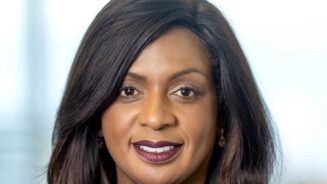Planning to embark on career in law after qualifying as a barrister, Andrew Lake instead switched to the financial world, where he has remained for the past 20 years.
“I was intending to go down the law career route. Then I tried it out and was not that keen on it,” he says, pointing out that the move into finance was probably the more natural one “because a lot of my family are in the business, particularly my father and my uncle, who both had senior roles at big banks”.
To date, Lake’s career includes a role at Merrill Lynch Investment Managers as director of global high yield and principal portfolio manager.
That was followed by further credit roles at F&C Asset Management and Aviva Investors, before joining Mirabaud Asset Management in 2013 as head of high income.
“When I came to Mirabaud, I had spent a number of years at some very large, well-established brands. The attraction of Mirabaud was that fixed income had perhaps not been a big focus for the firm over the past 20 or 30 years; it had been more of an equity house.
“The challenge for me was to build a business.”
Lake first launched Mirabaud’s Global High Yield Bond Fund, which is now coming up to its three- year anniversary, and six months later he added the Global Strategic Bond Fund.
The fixed-income team, which runs around £800m, has grown rapidly, from two to nine people during his tenure, which Lake says reflects the receptive market to Mirabaud’s offering.
“What we try to do here is to keep nimble and lean. The way we manage the funds is very much on a best ideas basis. Funds are slightly more concentrated than you would expect at other larger firms. That is why we do not need legions of analysts.”
Defining features
So in management terms, what do the two funds have in common and what are the key differences?
Lake says both funds share a degree of concentration because there is a top-down element to their management, a focus on world events, the countries the funds invest in and business cycles.
“That top-down element is obviously more important for the strategic bond fund,” he says, “because it is far more of a thematic fund in terms of how we invest across the world and how we invest across fixed income.
“The high-yield fund is much more of a single strategy but does have that element of top-down because we actively manage between different parts of high yield. Our main focus is the US, Europe and UK.”
By contrast, the strategic bond fund is more flexible, which Lake says will change over time as credit falls out of favour. He adds that both funds are also currency hedged.
“We do look at duration and manage that actively, which is also something that is slightly different to what has gone before in fixed income.”
He explains that for the past eight years duration has not really been an issue.
“We could be getting to the first interest rate rise in the US and the UK in the next six months or so,” he says. “Therefore, while I do not think it is going to be a big step change, it will begin to slowly filter through to investments as we move to the next stage of the cycle. So, duration will become an issue.”
“What we try to do here is to keep nimble and lean."




